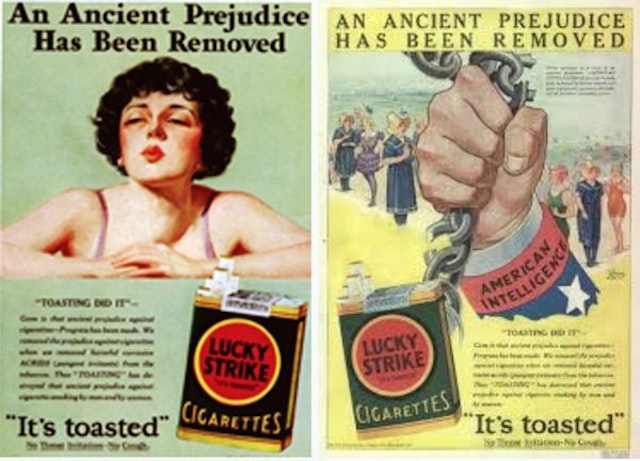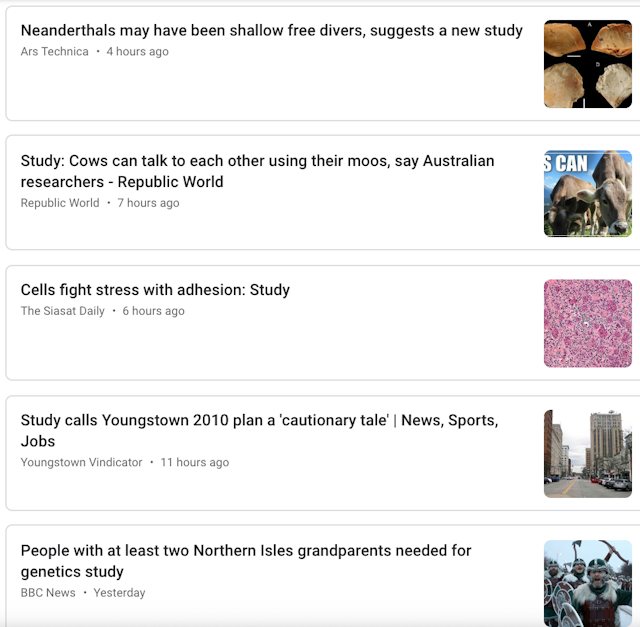Your company is ‘harder to get into than Harvard’? So is Walmart
It’s a common publicity tactic: brag that your hiring rate is lower than Harvard University’s acceptance rate. The obvious goal is to attract top talent to such a seemingly prestigious company. But it also happens to be completely disingenuous.

Take the most recent example. In late 2019, Blinkist, a modern version of CliffsNotes based in Berlin, published an advertorial – oh, excuse me, a piece of content marketing – in the company’s online magazine that highlighted the company’s success and promoted the exclusivity of its staff.
“In 2018, thousands of people applied for a job at Blinkist,” the article began. “1,600 candidates were interviewed, of which 73 were hired. Blinkist’s acceptance rate was 4.6%, and Harvard’s acceptance rate – 5.2%.
“It’s common knowledge – Harvard is tough to get into. Once there, expect to be surrounded by the smartest people – with the biggest and brightest ideas. Having Harvard on a CV opens up a lot of doors – and it’s the same with Blinkist. A company rapidly on the rise, being built by some of the world’s smartest people.”
There was just one problem. You know another business that has a lower acceptance rate than Harvard? The Walmart store in Washington, DC.
It is not just Blinkist. Many other companies have made similar, Harvard-related claims. The AngelPad startup accelerator. The Raya elite dating mobile app. Under Armor’s internship program. The Y Combinator startup program. The Andela training program in Africa for software engineers. An Apple coding academy in Italy.
The Data Incubator boot camp for data scientists. McDonald’s Hamburger University in China. The Deloitte consulting firm. Hunter College Elementary School in New York. The Citadel hedge fund. Banking giant Goldman Sachs. The summer internship program at The New York Times.
Saying that you are more exclusive than Harvard has become a bigger business PR cliche than politicians saying they are resigning to “spend more time with their families” following some scandal.
In 2018, Harvard’s acceptance rate was 4.6%. (Note that the statement from Blinkist above used the 2017 figure of 5.2%. The company’s hiring rate in 2018 was the exact same as the university’s that same year.)
According to Jobvite’s 2018 Recruiting Benchmark Report based on information from the 85 million people in the recruiting software company’s Job Seeker Database, all companies of all sizes have average hiring rates of 3.2% at the most.

In other words, company hiring rates, on average, are always less than Harvard’s acceptance rate. So, bragging that your figure is lower than the university’s is ignorant at best and disingenuous at worst. (Note: Jobvite’s 2019 report did not contain the same top-to-bottom percentage information.)
Think about it. How many companies do you know that hire more than a small number of the people who walk in the door or send resumes? Outside of industries with naturally high churn such as telemarketing and food service, most likely very few. Plus, digital technology has made it easy to send CVs to countless companies – meaning that the total number of resumes received by every business has likely skyrocketed and thereby lowered the percentage that result in a job.
Here are some better publicity tactics
Longtime readers know that I was a journalist and newspaper editor in my first career who later went into marketing. Today, I cover and speak about the industry as a trade journalist. As a result, I have been on both the sending and receiving end of publicity pitches. Here are some suggestions for publicists who want to do more than repeat tired cliches.
Contribute op-ed columns
Before the internet, the space on the op-ed page of a newspaper was extremely valuable because there was literally a finite amount of space for opinion columns. If five were published each day, two would often come from staff columnists and three from external contributors. Hundreds, if not thousands, of publicists would fight for one of those three spaces.
Today, however, websites and computer servers can hold and publish almost an infinite amount of material. As a result, many online publications are under greater pressure to “publish or perish” than university professors. (But I do still believe in quality over quantity in journalism.) So, opinion editors are more welcoming to contributors today. People with interesting ideas can get published more easily as long as they do not sell anything directly.
One example: Ryan 'Dr Draper' Wallman, a creative director in Australia, recently published Delusions of Brandeur, a self-described “antidote to the insanity that now pervades the marketing industry” today. Then, he published an opinion column in The Drum that discussed a purported lack of originality in modern advertising and also mentioned the book.
Use current events and trends
For whatever your company is selling, think about what current events and trends are relevant. Second, think of a way to position a top executive to discuss the issue in a way that does not directly sell anything but provides informative and original analysis. Third, research which news outlets and which specific writers at those publications cover that topic. Last, send a short pitch introducing your company, the executive and summarising what he can discuss.
Here in Tel Aviv, I have been doing some marcom consulting work for Vorpal, an Israeli tech company with a drone detection and tracking platform. When some countries in this volatile region began using drones in warfare, I advised that they should pitch company executives as sources of expert commentary. The result? Coverage in outlets including the Associated Press, US News & World Report and The Guardian.
Stage a contest
The essence of publicity is to generate enough mass interest in and excitement for something so that journalists will be forced to cover it. After all, most writers today are under constant pressure to get more and more eyeballs on their articles.
Exciting contests can be just the ticket. McDonald’s runs Monopoly contests. Last year, Ikea ran a contest that would pick someone to live and document life in Copenhagen. Way back in 2009, Fragrance maker Bond No. 9 launched a bottle design contest for a new product.
Connect to pop culture
People have deep, emotional connections to their favourite TV shows, bands and films. So, they will often read and share news articles that tie into them. As a result, journalists are keen to write about those topics. So, one creative idea is for companies to brainstorm something that ties their product or service to the entertainment in a way that also communicates their offering.
At my last job before I became a marketing speaker and columnist for The Drum, I was the first director of marketing for the Israeli IT log analysis platform Logz.io. In 2016, we used the system to analyse all the tweets that mentioned Game of Thrones to see, for example, whether fans thought Jon Snow or Ramsay Bolton would win the Battle of the Bastards. Our campaign was covered in outlets such as Geektime and DZone.
Product placements
This is also related to the idea of using popular entertainment. The best example, in my opinion, was the TV show Friends subtly promoting Pottery Barn and Joey and Chandler’s love of their Barcalounger chairs in two episodes. A Williams-Sonoma executive once told a trade conference in Chicago that the company sees a spike in Pottery Barn sales whenever the episode airs in reruns.
However, product placements are delicate. They must not be obvious and must make sense in terms of the plot. The worst example I have seen is when brand pitches are shoehorned into the program. Just see these clips mentioning Bing in Hawaii Five-0 (the remake) and Toyota's self-parking Yaris model in Bones.
Journalists will write about products that appear in TV shows and movies. For better or worse.
Working for a cause
Yes, I have often written that “brand purpose” and “cause marketing” are based on faulty premises and replacements for how companies can truly help the world. But there are always exceptions to general rules.
In the US during the beginnings of feminism in the 1920s, Edward Bernays, the so-called "Father of Spin", paid women to smoke cigarettes – dubbed “torches of freedom” – as they walked in the Easter Sunday Parade in New York. (At the time, it was considered “unladylike” to smoke them.) The publicity campaign was supported by concurrent advertising campaigns.

Working with non-profit organisations can also be extremely effective. For example, Girls Who Code and Women in Technology are trying to get more women into the high-tech world. For companies with those target audiences, partnering with such groups can be a good way to get media coverage and help a good cause at the same time.
Conduct a survey or do a study
What is the number one reason that people read the news? To know what happened and understand the greater significance. That is one reason why news outlets love reporting on new studies. They purport to be something original and insightful.
Just see a recent popular column of mine highlighting a report from the UK’s Institute of Practitioners in Advertising finding that a golden age of advertising technology has not led to a golden age of advertising effectiveness. And I can give no better example than this screenshot from Google News just now for “study”.

How to interpret the results
Regardless of the publicity tactic that you use, it is important to remember a few things. While you will often see a short uptick in leads or sales immediately after some news coverage, the result of most publicity work focuses on the top of the funnel. The goal is both reach and awareness as well as gaining credibility from having your brand appear in authoritative news outlets.
Ongoing publicity efforts aim to increase awareness and change a mass audience’s perceptions of your company over time. The results are rarely seen immediately in some online analytics dashboard that cannot measure what occurs in the real world. One of the only ways to measure what happens inside people’s heads is to use traditional methods such as focus groups and professional polling companies rather than free internet survey tools.
Whatever your publicity tactic, just do not tell the media that your company is harder to get into than Harvard. That is more tired than remaking old television shows such as Hawaii Five-0 – and doing so badly.
The Promotion Fix is an exclusive biweekly column for The Drum contributed by global keynote marketing speaker Samuel Scott, a former journalist, newspaper editor and director of marketing in the high-tech industry. Follow him on Twitter. Scott is based out of Tel Aviv, Israel.

